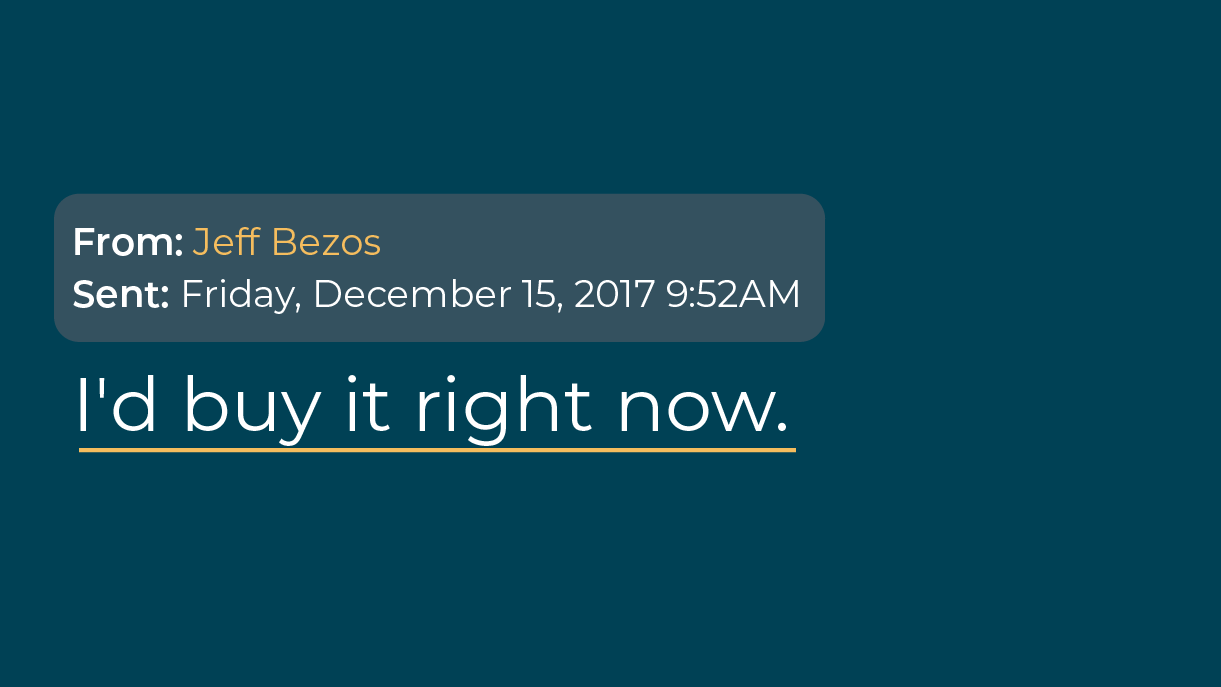How to Map B2B Decision Makers | Enterprise Account Maps That Actually Help Win Deals
All enterprise deal reviews should include an account map.
But the typical account map doesn’t help the deal review.
Here’s why. The first time I brought an account map to our CEO, to ask his help developing a particularly large deal, he called it “perfunctory.” After quickly googling the definition of perfunctory… I realized he was right.
I had laid out each contact in a colorful chart with their title, buying role, and reporting relationship. I even included headshots and contact information. But here’s the point I missed.
Enterprise account mapping is about designing the flow of internal communications. Who needs to say what to who, and when, to keep a deal moving. It’s about:
- Influence, not information.
- Design, not documentation.
- Communication, not the corporate hierarchy.
The Metaphor for Better Account Maps
Most sales reps (my former self included) think of account maps like the chain of command.
Which is… fine. It’s not wrong. It just means their account map isn’t doing much to help them win.
A more effective approach to account mapping looks like this. An ocean map.

Ocean maps are dynamic, never static. They track the flow of currents; a force that’s strong enough to shape global weather patterns.
Enterprise account mapping is like this. If you want to shape the direction of a global corporation, you need to understand and influence the flow of its internal communications.
There’s a fascinating communications theory that supports this idea. It’s called Organization Information Theory (OIT). The fundamentals of OIT are:
- Enterprises aren’t “nouns,” made up of assets, products, and people. They’re “verbs.” An ongoing series of interactions to collect, communicate, and act on information.
- Different people operate in different “information environments” (which are always changing). That's why two people can hear the same thing but perceive it differently.
- Taking these ideas together, the enterprise is defined by “sense-making.” The process of helping others understand what’s truly happening, to decide on the right course of action.
- This repeats in a continual loop. Action is taken, information is created, communications flow in the sense-marking process, and a new action is decided on. Repeat.
In short, OIT is suggesting that the enterprise is internal communication. Let me repeat that. Communication is the enterprise. Its very nature.
Which means the power structures painted on a typical account map don’t capture what influences the decision making process.
Account (”ocean”) mapping is more kinetic. It’s meant to capture how internal communications (”currents”) flow to influence an enterprise’s action (”the weather”).
Still with me here? Great.
With this in mind, let’s move from metaphors to practical account mapping steps.
How to Influence all Types of B2B Decision Makers
Here’s the step-by-step account mapping process we’ll break down in the rest of this post:
- Inventory the typical communications involved in your past deals.
- Identify and profile each buying contact inside your target account.
- Discover which communications you’ll need to build influence.
- Design the ideal flow for all internal communications.
- Update your map throughout the deal cycle.
Step 1: Inventory the typical communications involved in your past deals.
If the enterprise is defined by its internal communications, then your pipeline is too. Every time a deal advances a stage, there’s communication happening inside the buying team.
Your first step is to inventory those communications. This way, you can become more intentional about designing them.
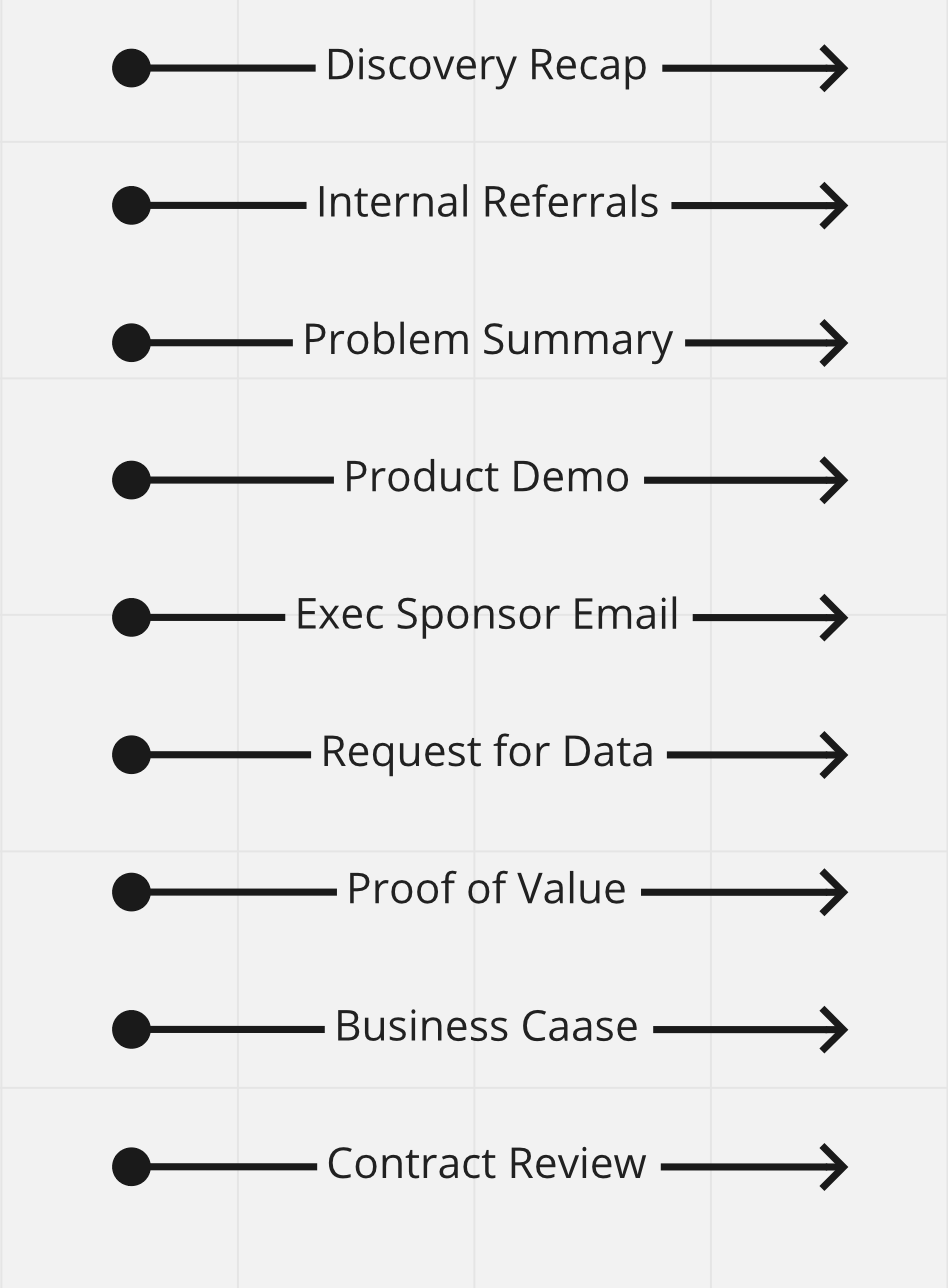
Look in your CRM and pull up the account history for the last five deals you closed. Read through them, noting each type of communication. You might see calls, invites, and emails relating to:
- Discovery conversations
- Problem summaries
- Software demos
- NDA signatures
- Forwardable emails
- Follow-up’s for team input
- Business cases
- Requests for data
- Proof of value exercises
- Solution requirements
- Security reviews
- Contract and legal reviews
Add these to your account map on the left. Personally, my teams have used Miro, but tools like Mural and PowerPoint work too.
Step 2: Identify and profile every buying contact inside your target account.
As you research your target account, or learn about new contacts during your sales conversations, identify what role they’ll play in your deal. Common roles on the buying team are:
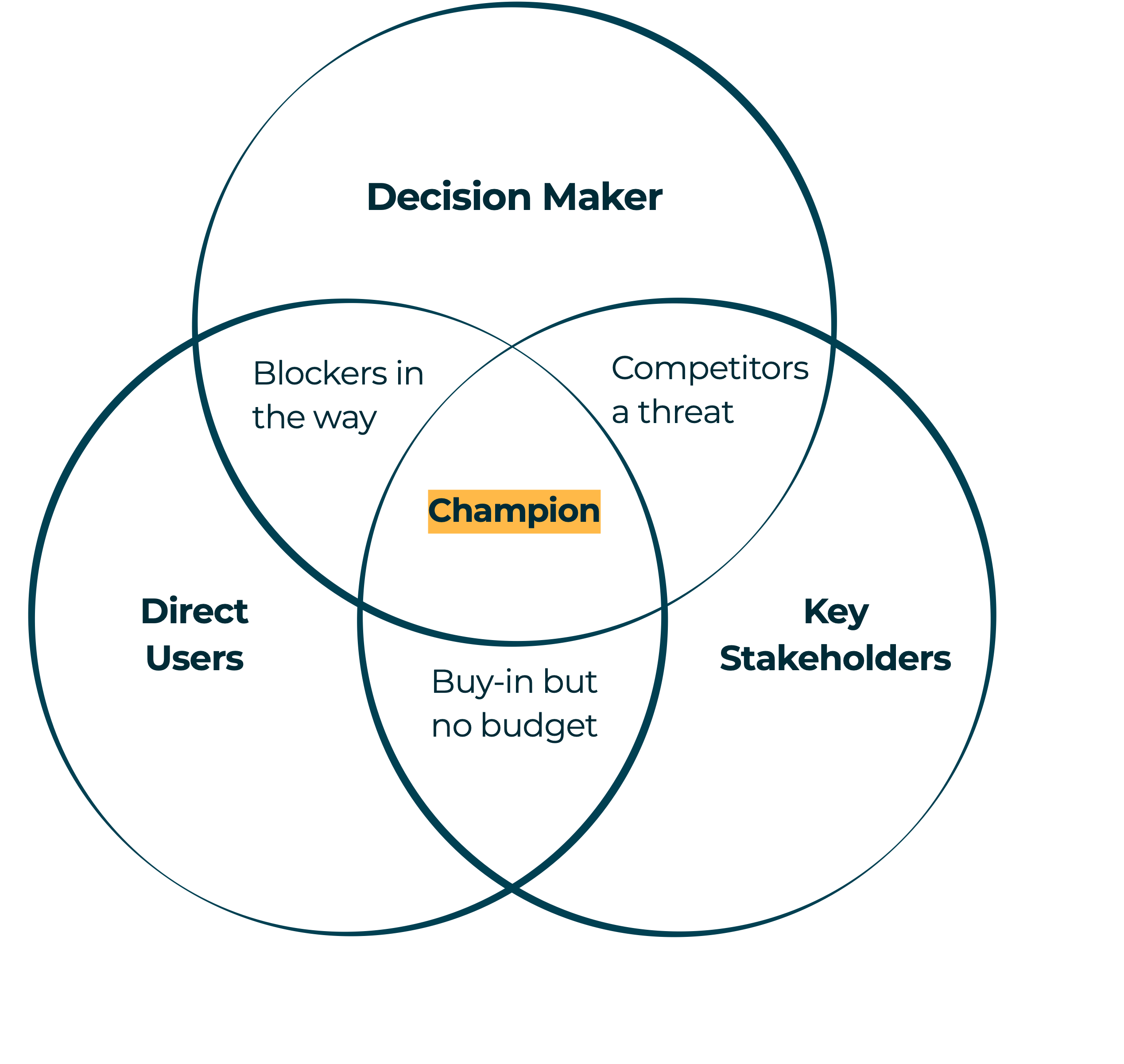
- Champions. The glue between all contacts in your deal. They’ll help you influence decisions, learn hard-to-find information, and they’re incentivized to see your deal close.
- Direct Users. The people who interact with your software or services day to day.
- Key Stakeholders. Contacts like IT, legal, procurement who need to approve your deal.
- Decision Makers. There can be multiple, but this is often the “economic buyer.” The person whose budget pays the bill.
You’ll need to get every type of buyer on board, otherwise, you’ll end up with a blocker.
Inside your account map, create a simple key for each buying role. Then, create a short profile for each contact with three points noted:
- Buying Role. I like color-coding this.
- Current Priority. What project is absorbing the majority of their time and attention?
- Key Metrics. How are they evaluated? What company-wide measures do they impact?
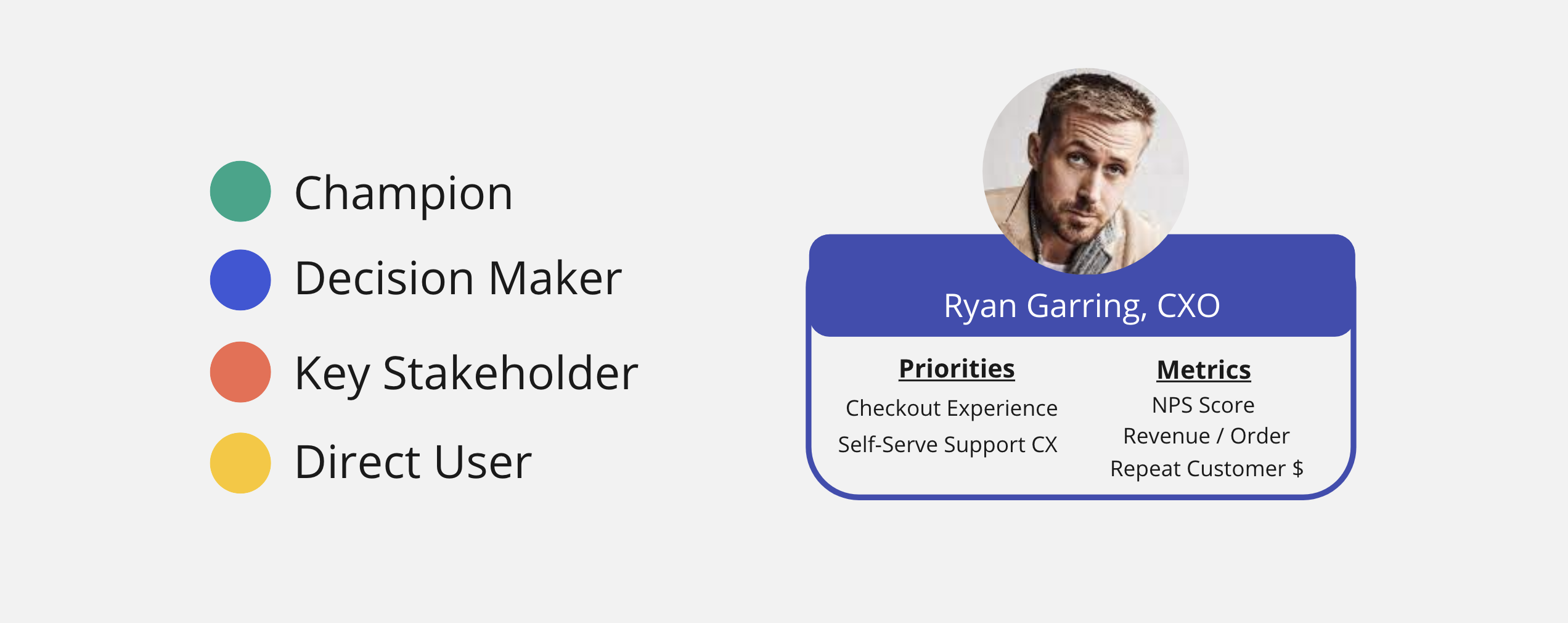
The second two points in each profile are key. Generally, people’s actions are a product of:
- Information. People operating with different sets of information will act differently. Each person’s current project list drives their ‘information environment’.
- Incentives. How someone is evaluated, compensated, and promoted guides what they prioritize and act on. Key metrics can help you understand this.
Personalities and personal values are also factors, and are nice extras if you’d like to add them.
Now, let’s start building on this process with an example.
Let’s say you sell AI-driven search technology. You prospect a large, online retailer of outdoor gear. We’ll call them FrontCountry.com. Outdoor enthusiasts care a lot about the customer experience, so you’re focused on the Chief Experience Officer’s team.
Here’s what a typical account map will look like. It shows the hierarchy using these profiles.

Step 3: Discover which communications you’ll need to build influence.
Forces like water temperature and the contours of the ocean floor all influence currents. There’s a different combination of factors affecting each current around the globe.
In the same way, you’ll want to discover what makes each of your target accounts different from the average account. Example account factors include:
- Past data or privacy breaches leading to more intense security reviews.
- Different business units or geographies with separate, siloed databases.
- Recent executive turnover causing a shift in company-wide priorities.
Each of these examples creates a need for new communications, outside the list from Step 1. Here are a few tactical ways to discover these differences:
- Become increasingly multi-threaded at each stage. Use buyer-friendly questions like:
“Is there anyone who might feel left out if we didn’t include them on our next call?” or “Who else will this impact, that hasn’t yet had a chance to weigh in?”
- Build a tested and committed champion and ask them for the insider’s view. Do you need to do a POC? Have they bought products while skipping this step? It’ll be much more difficult to discover insider information for your account map without a champion.
- Request and review any material the buying team’s willing to share. Materials like requirements documents, presentation templates, vendor assessments and rollout plans are all helpful — especially anything that was used for similar projects.
- Reach out to partners and non-competitive sales teams in your network who have sold into the account in the past. How did their sales process unfold? Consulting firms who have worked with the account are a goldmine of information, too.
To continue the ocean mapping analogy, check out this great addition that Dan Gridin dropped on LinkedIn. Don't sleep on communications that help address any "undertow" in your deal.

Step 4: Design the ideal flow for all internal communications.
At this point, you’ve collected all the pieces you need for an effective account map.
This is where you’ll start to see a major difference to the traditional account map — and how ocean currents are a more helpful metaphor. Your final account map will look something like this:

Now, it’s time to design the flow of communications you want to set in motion, to influence the deal’s outcome. Plan out who says what to who, when, throughout the buying process:
- Link each contact from Step 2 using the list of internal communications from Step 3 (not a reporting relationship). Label the sender, receiver, and type of communication.
- Contacts will start to appear on your map multiple times as new communications move your deal forward over time — or they’re involved in multiple communications at the same time.
- Start by mapping an ideal flow of communications based on what you know. This is your design step. Create a best-case scenario. (You’ll update the map based on reality in Step 5.)
Notice the key question driving this step: what does the ideal communication flow look like?
Naturally, this will vary by account, but here’s a set of principles to keep in mind.
- Start your discovery conversations as far upstream as possible.
It takes more time for your message to flow up the corporate ladder than back down. Getting a message from a Manager to an Executive can take months, but only days in the opposite direction. The further upstream you start your discovery, the more you’ll swim with the current.
In our example, the sales rep (yours truly) does a good job of forming a point of view, targeting the executive upfront, and uncovering where the problem is.
Customers can’t find answers to issues involving sizing, returns, and gear-specific questions, even though there are thousands of articles in their help section, and specifications written on every product page.
That’s leading to a backlog of support tickets, frustrated customers, and extra staffing costs. So Ryan, the CXO, sponsors more discovery with the Support team. eCommerce isn’t the priority.
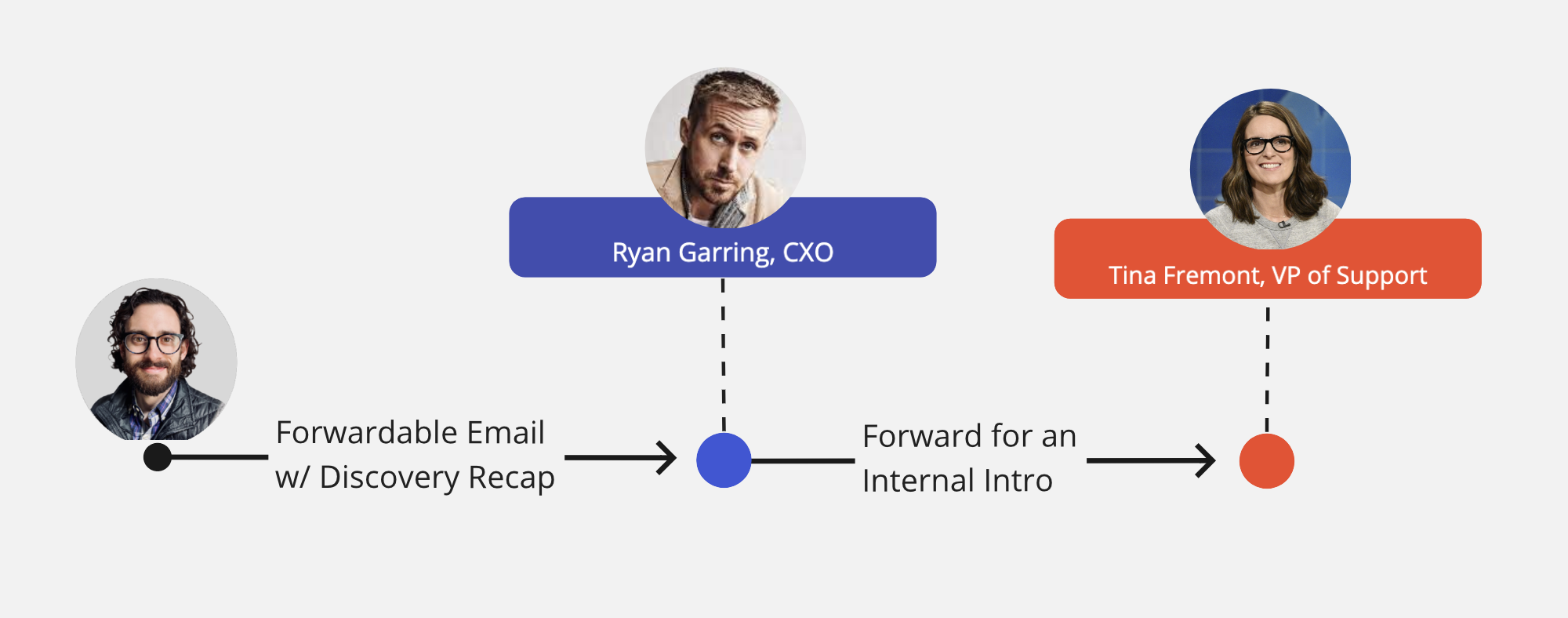
- Make sure time-sensitive requests come from inside the same team.
Let’s say you need data produced for a quick proof-of-value exercise before the end of the quarter. Make sure the contact producing the data gets a request from their boss, not another business unit they don’t report to. It’ll jump their priority list much faster.
Let’s say the FrontCountry.com Support team wants to build a proof of concept.
Tina, the VP of Support, wants her manager, Gina, to help the sales team use data from the past year’s support tickets plus help articles in their knowledge base.
It’s good Tina, not Gina, sends the data request to the Business Intelligence team. But even though Tina’s a VP, it’d be more effective to have Tina loop in Dwayne’s boss for the request — especially if pulling the data is a multi-day effort that Dwayne might ignore for a while.
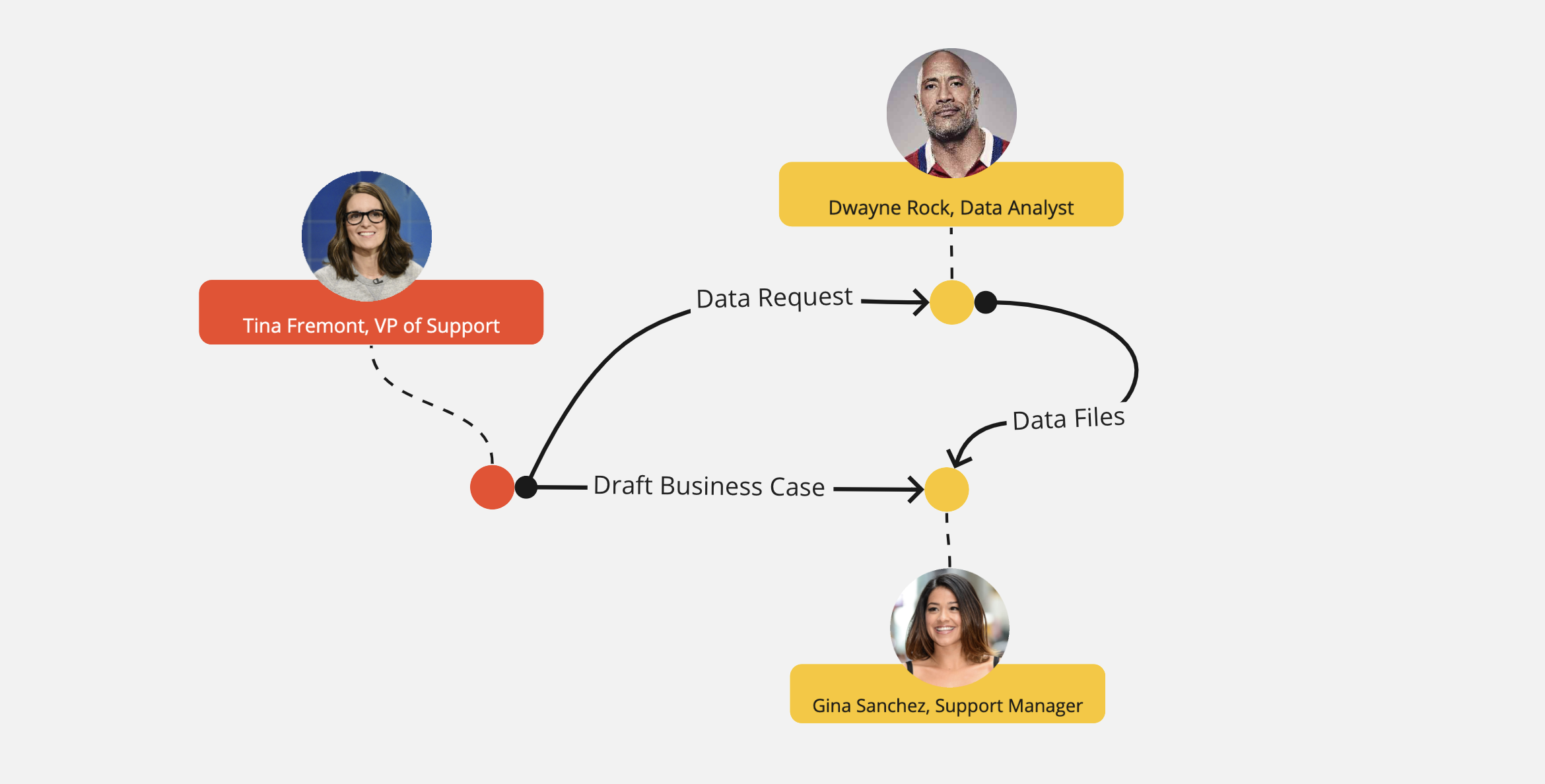
- Use forwardable emails to ensure the sender is internal, not external.
Internal emails are always prioritized over external emails. Write your emails with the ultimate receiver in mind — not just the person in the “To:” field — so that it’s easy for your first contact to hit forward. For a template with more specifics, see this guide.
Back to our example, here’s a missed chance for a forwardable email, which should be called out in a deal review. Instead of having the sales rep send the proof-of-concept results back to Tina with Gina CC’d, have Gina forward it to send Tina — or write it up alongside Gina.
Chances are, Tina will prioritize the message faster, and Gina gets to become the champion sharing good news.

- Spread information broadly, and calls-to-action individually.
If you need people to see and read a meeting recap, include the group. If you need someone from that group to take action, make sure there’s another individual, 1:1 note that follows. Include a specific request and timeline, using the longer message as context.
- As your contact list grows, beware of shadow players.
If you notice a contact who stays silent, fades into the shadows, or ducks meetings, shine a light on them. Are they a power user of another software? Are they opposed to making a change? Label this during a conversation with your champion to see what they think. For example, *“Seems like Tina isn’t interested….”* or, *“Looks like Gina sees it differently…”*
- Build a bridge between business units from up high, not down low.
Let’s say your use case spans both customer success and new sales. You’ll be talking to teams with totally different projects, priorities, and key metrics. To keep your deal moving, you’ll need communication flowing from someone who oversees both business units — the CRO, for example. It won’t work to have a sales manager liaising with the success team, for example.
- Plant seeds with key stakeholders early.
Most sellers communicate with teams like procurement and legal at the end of the sales cycle. When possible, take small steps like setting up a vendor profile, sharing key terms in your services agreement, or reviewing the customer’s data processing agreements early to avoid delays.
In our example, this is “okay.” It’s not the ideal, but at least Tina’s helping start the procurement process, while sharing her final business case with Ryan. Then, Ryan can send a follow-up to procurement after, to speed the process along.

- Pay attention to different communication mediums.
Not every communication that moves your deal forward is an email or call. Are there standing agendas, Slack channels, or other internal meetings where your deal will be discussed? Work with your champion to understand how information flows through those mediums.
- Address the “WIFM” (what’s in it for me?) by referencing metrics and trigger phrases.
Trigger phrases are a buyer’s own, internal language. They refer to some type of team priority or company-wide project that leadership is pushing for. Ensure your message obviously aligns with those initiatives — and their related metrics — by including trigger phrases in your communication.
- Don’t neglect the messenger.
The perception of a new project will vary significantly based on who communicates it. Something suggested by an analyst can be dismissed as “outlandish,” or “outside priorities,” but introduced by an SVP as “visionary” and “urgent” in the enterprise.
- Have linchpin users send your message, not just key employees.
Linchpin users carry an outsized level of influence with their teams, regardless of their title. Their experience, tenure, and expertise in specific project areas will boost your credibility, and ensure others get your message and get on board.
- Create with your champion, to control your message when you’re not in the room.
Top enterprise reps co-create their sales materials with their champion, to guide their message during internal meetings. Often, that communication is written, not limited to conversation.

Step 5: Update your map throughout the deal cycle.
Remember, an account map is dynamic, not static. You’ll want to revise and update your map as you receive new inputs, your deal evolves, and it grows hotter or colder.
You’ll find there are two basic mapping methods:
- Mapping From the Sky.
Ocean maps include satellite data. This is the above-the-line, senior employee’s perspective. One conversation can bring you a lot of context on company-wide initiatives, industry pressures, and team incentives that others can’t. Use this information to update your map’s design.
- Mapping From the Surface.
Another source of ocean data is floating sea buoys that send radio data to receiving stations. Think of this like lots of conversations with users who work “on the ground.” It’ll bring you a greater level of detail and appreciation for their day-to-day realities.
Collecting and incorporating both datasets gives you the clearest view of reality, and the most thoughtful design. You’re able to operate with both a global view spanning continents, and a feeling of what it’s like to be caught inside a current, tossed back and forth by the waves.
In summary, thoughtful account mapping is all about:
- Influence, not information.
- Design, not documentation.
- Communication, not the corporate hierarchy.
You can see the difference between the two approaches below:

Why stop now?
You’re on a roll. Keep reading related write-up’s:
Draft with one click, go from DIY, to done-with-you AI
Get an executive-ready business case in seconds, built with your buyer's words and our AI.

Meet the sellers simplifying complex deals
Loved by top performers from 500+ companies with over $250M in closed-won revenue, across 19,900 deals managed with Fluint

Now getting more call transcripts into the tool so I can do more of that 1-click goodness.



The buying team literally skipped entire steps in the decision process after seeing our champion lay out the value for them.


Which is what Fluint lets me do: enable my champions, by making it easy for them to sell what matters to them and impacts their role.




